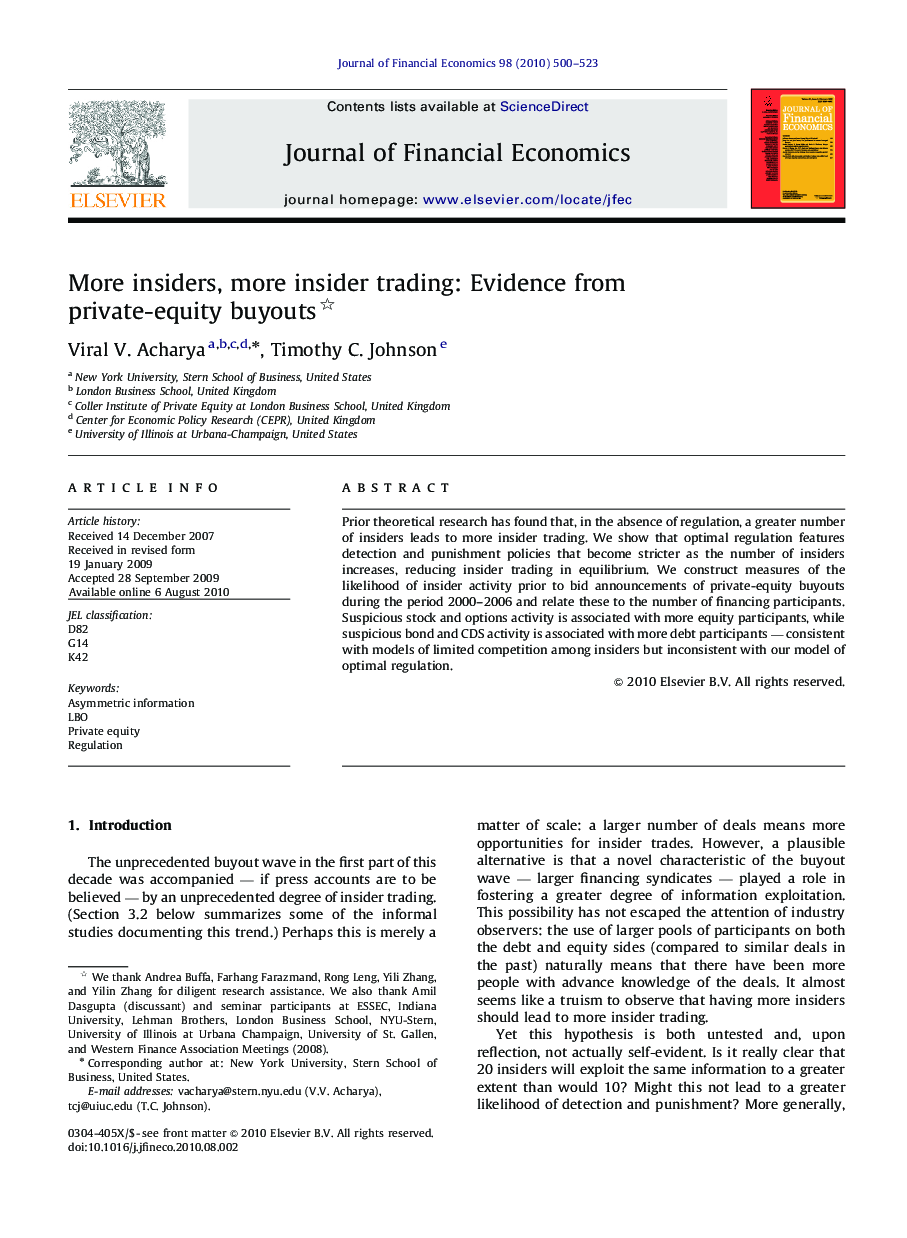| Article ID | Journal | Published Year | Pages | File Type |
|---|---|---|---|---|
| 959801 | Journal of Financial Economics | 2010 | 24 Pages |
Prior theoretical research has found that, in the absence of regulation, a greater number of insiders leads to more insider trading. We show that optimal regulation features detection and punishment policies that become stricter as the number of insiders increases, reducing insider trading in equilibrium. We construct measures of the likelihood of insider activity prior to bid announcements of private-equity buyouts during the period 2000–2006 and relate these to the number of financing participants. Suspicious stock and options activity is associated with more equity participants, while suspicious bond and CDS activity is associated with more debt participants — consistent with models of limited competition among insiders but inconsistent with our model of optimal regulation.
